












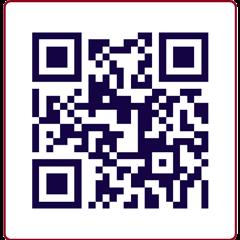
























SDVM is a veteran-focused magazine throughout ALL San Diego & Southern California. It serves to assist all veterans, active military as well as their spouses and families.
It is the leading veteran magazine emphasizing resources & support and focusing on topics and issues facing today’s veteran community. SDVM focuses on resources, support, community, transition, mental health, inspiration and more...
The content is the driving force behind our magazine and the connection it makes with our veterans, service members, military families, and civilians.
The magazine is supported by the city of San Diego and a distinguishing list of veteran organizations & members, resource centers, coalitions, veteran advocates, and more. We are honored to share the work of so many committed and thoughtful people.
Despite all the challenges, our team has upheld their focus and let not one opportunity go to provide resources and support to our veterans & military personnel.
On behalf of our team, we wanted to take this moment to say THANK YOU to the readers and our military-veteran community for supporting our magazine. With that support we aim to make a difference and continuing to make a profound impact on the quality of life for our veterans, military personnel and their families.
If you want to catch up on the current and past issues, please visit: www.sandiegoveteransmagazine.com/archives
Mike Miller
Editor-In-Chief
mikemiller@sdvetsmagazine.com
www.sandiegoveteransmagazine.com
Publisher
Editor-In-Chief
Mike Miller
Monthly Columns
What’s Next In Transition
Eve Nasby
Human Resources
Paul Falcone
Franchise Dreams
Doug Dwyer
Successful Transitioning Stories
Dr. Julie Ducharme
Veterans in Business
Barbara Eldridge
Risky Business
Hadley Wood
Real Talk: Mental Health
Hope Phifer
PTSD: Reclaiming Control
Robert ‘Bob’ Cuyler, PhD
Legal Eagle
Kelly Bagla, Esq.
Veterans Chamber Commerce
Joe Molina
Midway Magic
David Koontz
Veterans Chamber Commerce
Joe Molina
Contributing Writers
Wounded Warrior Project
Disabled American Veterans
(In-House) Correspondents
Holly Shaffner
CJ Machado
Lori Noonan
mikemiller@SDVetsMagazine.com







Y O U R S E L F
H E A L O U R
W O R L D


Harmonetiks is an educational system that naturally and easily trains the body to regain harmony and balance which has been demonstrated through a variety of healing modalities and verified through western science and ancient medicine.

52% reduction in pain
63% reduction in anxiety
122 program participants




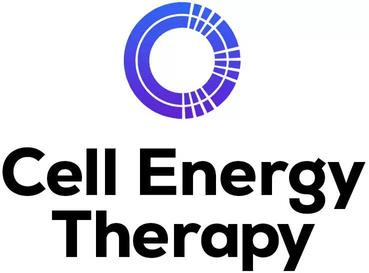



He should have already been back stateside with his family, but when the war to liberate Kuwait was imminent, Lt. Barry Bratton’s two-year assignment as a catapult officer on the USS Midway (CV-41) was extended – indefinitely. He missed his family terribly, and they missed him.
In the days leading up to Operation Desert Storm, while Midway was on station in the Persian Gulf, Bratton received an oversize card from his wife and daughter. With a teary-eyed cartoon elephant on the cover, it read simply “I Miss You!” The card sat for months on the desk in his stateroom.


When Iraq was defeated and the hostilities ended in early 1991, an exhausted Bratton was finally given the green light to go home. As Midway was returning to its homeport in Japan, he started gathering his gear. Then it happened.
“I was quite anxious to pack up and see my family again,” said Bratton, a naval flight officer, and tactical coordinator who flew in the P-3 Orion anti-submarine aircraft with multiple Navy patrol squadrons. “When I was packing, I bumped the card and it closed, and dropped down behind my desk through a gap between the desk and bulkhead. As the desk was bolted or welded in place, I just pressed on with packing and didn't give it a second thought.”
More than 30 years later, he changed his mind.
“A couple of years ago I was visiting the Midway and met volunteer Chappie Ward who arranged for a behindthe-scenes tour for me,” said Bratton, who left the Navy in 1998 and became an airport director. “I was able to visit my old stateroom and was surprised to see that it was just as I had left it in 1991. After I left, I began wondering if that card was still there behind the desk, and wondered over the next two years if there was a chance to recover it.”
Earlier this year, Bratton reached back out to Midway asking if he could again visit his old stateroom to see if he could find his missing card.
Bratton’s request was relayed to Greg Giudice, Midway’s safety supervisor.
“Greg is often called on to escort former crew members to their former work and berthing spaces,” said Bonnie Brown, one of Midway’s volunteer librarians. “Greg was scheduled for knee surgery but was able to return to work to meet Mr. Bratton and do the tour he requested.”
“Former Midway sailors usually have a list of places they would like to visit,” said Giudice, who has been a member of the museum’s safety department since 2016.
“Between their remembrances and my knowledge of the ship, we’ve had good success in fulfilling their requests. I felt relatively certain that I could find his bunkroom and the card hidden behind the desk.”
The day before Bratton was scheduled to visit Midway, Giudice went to his old stateroom to try to find and retrieve the card.
“I used a crowbar to pry off the molding around the desk and then to pry the desk away from the bulkhead,” said Giudice, a retired San Diego probation officer. “I was then able to rake the area behind the desk and bring out the card that had fallen behind the it.”
When Bratton arrived at the ship, he was ready to start his own search.
“I had come prepared with a fiber optic camera and a special reach tool to attempt to recover the card,” said Bratton, who lives in Estero, Fla. “I'll never forget the moment when I came aboard and Greg said that he had already recovered the card. I was amazed. It was like opening a time capsule after all those years.”
“Being able to present the card to Barry definitely brought tears to my eyes,” said Giudice, who served on the USS Saratoga (CV-60) from 1973-1976.
Reclaiming the lost card was not only a chance for Batton to once again see something that help him through a challenging time during the Gulf War, but brought back special memories.
“After I lost my wife to cancer in 2015, I found that she had saved every letter I had written to her during my time away in the Navy,” said Bratton, who felt Midway was the most impactful tour of his Navy career.
“I was not as smart as she was, so I did not save her cards and letters from my many deployments. After she passed away, I wished I had kept at least some of them. Finding her card perfectly preserved behind that desk for all those years was a special gift for me and my daughter.” Barry & his daughter Kim
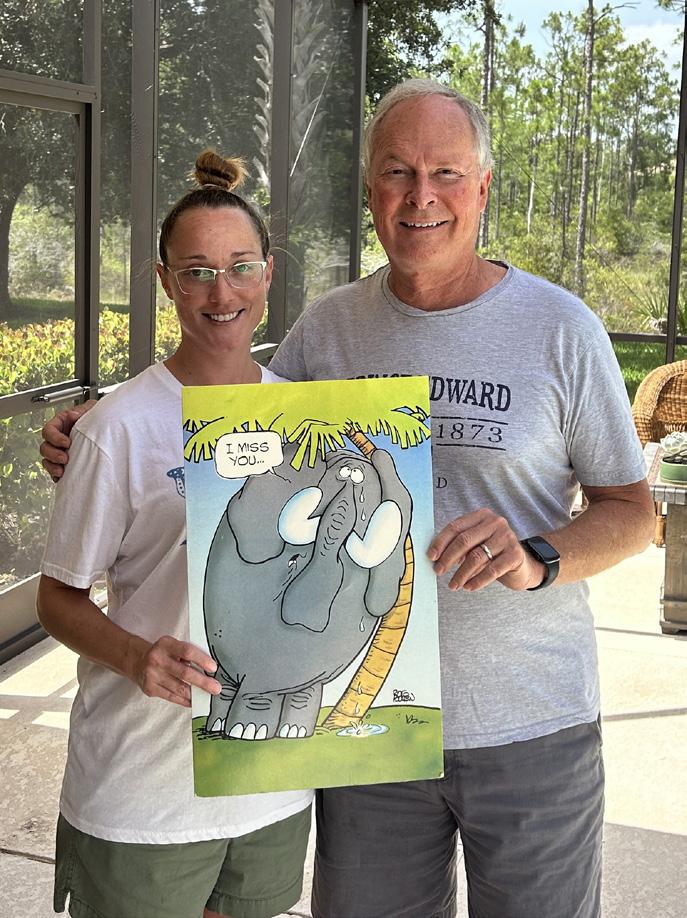
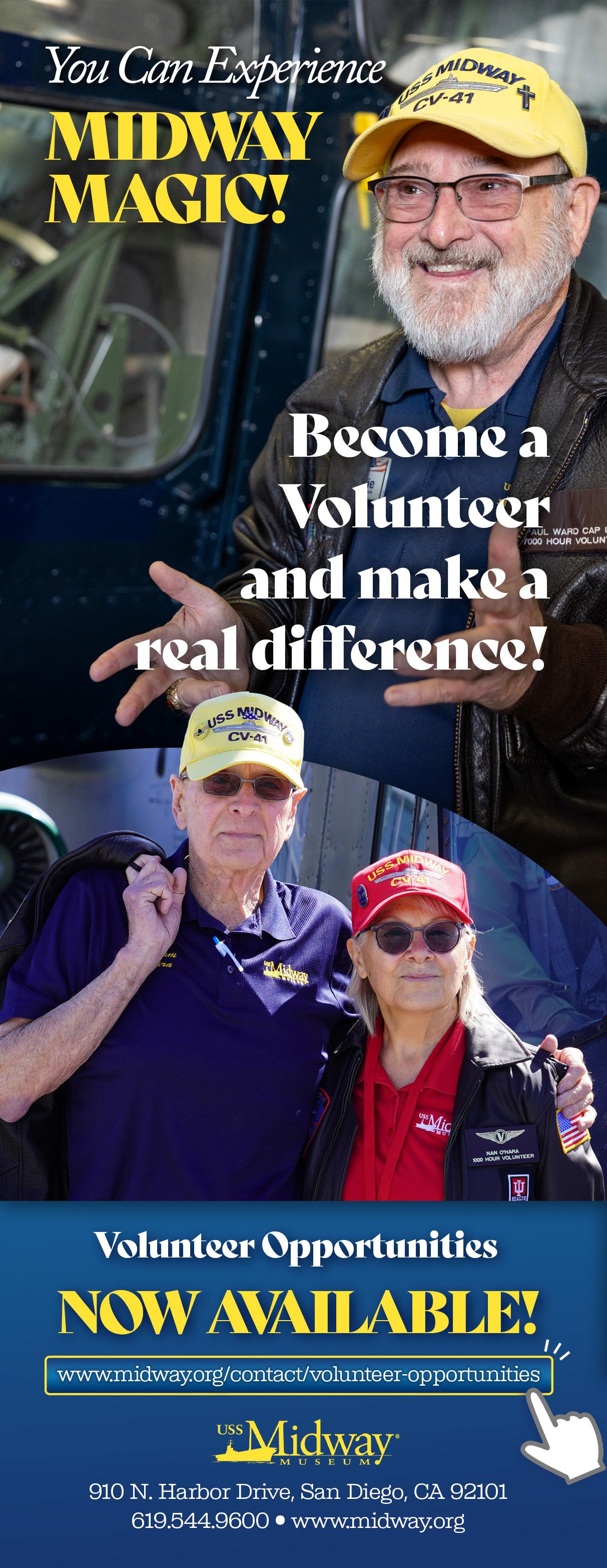
www.midway.org/contact/volunteer-opportunities
www.midway.org

- Francis Scott Key
"Land of the Free and home of the Brave" is a phrase from the last line of the Star-Spangled Banner, the U.S. national anthem. It is often associated with the Fourth of July and Independence Day celebrations in the United States, as it embodies the nation's ideals of freedom and courage.

Independence Day is annually celebrated on July 4th and is often known as “the Fourth of July”.
It is the anniversary of the publication of the declaration of independence from Great Britain in 1776. Patriotic displays and family events are organized throughout the United States.
On July 4th, 1776 the United States laid down its claim to be a free and independent nation by adopting the Declaration of Independence. Today, Independence Day is celebrated and honored in many forms such as fireworks, BBQs and parades. It is an opportunity for Americans to express patriotism and love of country including reflecting on the sacrifices from those in the military.
On June 11th, 1776 the Second Continental Congress met in Philadelphia to formally sever ties with Great Britain. Thomas Jefferson, who considered an esteemed writer, was selected to draft the document. After 86 revisions and on July 4th, 1776 the Continental Congress signed the final version.
The first readings of the document included ringing of bells and band music. The following Fourth of July Congress was adjourned in Philadelphia and everybody celebrated with bells, bonfires and fireworks. Soon these customs spread to other areas within the 13 colonies and new customs began to develop such as picnics, speeches, games, military displays and of course fireworks. These traditions continued for almost a century before Congress finally established Independence Day as a holiday.
Thomas Jefferson was the principal author of the Declaration of Independence.
The Declaration states,
“We hold these Truths to be selfevident, that all Men are created equal, that they are endowed by their Creator with certain unalienable Rights, that among these are Life, Liberty, and the Pursuit of Happiness….”
• The original copy of the Declaration is housed in the National Archives in Washington, D.C. and July 4 has been designated a national holiday to commemorate the day the United States
• Independence Day 2015 is the 239th Independence Day.
• 56 People signed the Declaration of Independence.
• John Hancock was the first signer and famously had the largest signature.
• In July 1776 there were an estimated 2.5 million people living in the Colonial United States.
• Currently there are approximately 316 million Americans.
• The Declaration of Independence was revised 86 times.
• The first Independence Day was celebrated on July 8, 1776.
• Thomas Jefferson and John Adams both died on the Fourth of July, 1826.
• Barbecue with friends and family
• Watch a fireworks show
• Go to a blockbuster movie release
• Have a block party
• Light some fireworks (safely & legally of course)
• Attend a baseball game
• Find water – Boating, beaching and water skiing
• Rent a 4th of July themed movie
• Find a National Park hosting a July 4th event
• Fly the American Flag
• Wear Red, White and Blue
• Volunteer to help our veterans
• Take a trip to a special fort, park or monument near you.
• Go to a Fourth of July celebration
• Attend a Revolutionary War reenactment
• Send Letters, Care Packages, and Other Ways to Support the Military

Warrior Foundation Freedom Station: Hope,
At the heart of Warrior Foundation Freedom Station is a simple, yet profound mission: to support ill and injured post-9/11 service members as they transition from military service into their next chapter. Fulfilling this mission requires compassion, commitment, and an unwavering sense of honor. The transition from the battlefield to the home front is often fraught with uncertainty, physical pain, psychological injuries, and a daunting sense of isolation. Freedom Station provides a place where these Warriors can heal, regroup, and rebuild their lives with dignity and purpose.
Unlike many transitional housing programs, Freedom Station is uniquely structured. It is not a shelter or a temporary fix. It is a thoughtfully designed, community-oriented residential solution. Located in San Diego, the three Freedom Stations offer a
welcoming neighborhood of private, furnished cottages and shared spaces, where camaraderie flourishes and healing begins. Here, Warriors are surrounded by fellow peers who understand their challenges, as well as a support network that includes mentors, counselors, and staff dedicated to cultivating their success.
The Foundation’s wraparound approach is what sets them apart. Residents are not only provided with safe, affordable housing, but also the tools to succeed for the rest of their lives. From job training and educational assistance to counseling and life skills workshops, the support is comprehensive. Even more powerful is the personal mentorship that residents receive from those who have walked a similar path. This peer support becomes the glue that binds the community and fosters resilience.
“We are excited to offer 29 affordable housing cottages coupled with an individually tailored transitional housing program designed to make the Warrior win. Through mentorship, peer to peer support, and counseling, each are designed to enrich the residents’ lives allowing them to thrive and become success stories.” – Andrew Gasper, CEO, Warrior Foundation Freedom Station
Freedom Station is also an incubator for purpose. Many of the residents, once stabilized and supported, go on to become Legacy Warriors,
“We Vow to be a Hand-up; Not a Hand-out.”




advocates, and role models for our next residents. The sense of purpose once carried with the uniform is powerfully rediscovered in new and meaningful ways. Whether it is through education, employment, or volunteerism, these men and women emerge stronger, determined to contribute again.
The true impact of Warrior Foundation Freedom Station is revealed not through statistics, but through the powerful personal journeys of those it serves. Men and women who once faced uncertain futures now hold their heads up high. Injured Warriors, some with life-altering injuries, have become competitive athletes. Individuals who arrived quiet and broken have rediscovered their voice, regained their confidence, and reclaimed their future. These are more than transitions — they are profound transformations.
In an era where public support for veterans is often vocal but not always tangible, Warrior Foundation Freedom Station offers a blueprint for what real support looks like. It is tangible, personal, and effective. It acknowledges the complexity of transition and meets it with a multifaceted, deeply human response. Warrior Foundation is a testament to what can be achieved when we commit not only to saying “thank you for your service,” but to showing it in real, life-changing ways.
“The foundation is awesome. You know the road I have walked is far from easy. It was time for something good to come my way. The foundation got me into a stunning home—a place that’s peaceful, safe, and beautiful. This isn’t just a house, it’s a new beginning. A space where I can breathe again, heal, and start dreaming forward. Better days are ahead. The hope you provide is real.”
- Glenn H., FS III resident
That is the essence of Warrior Foundation Freedom Station: not just homes, but hope. Not just support, but strength, and most importantly, not just words, but unwavering action. Visit WarriorFoundation.org for more information, to donate, or to get involved.



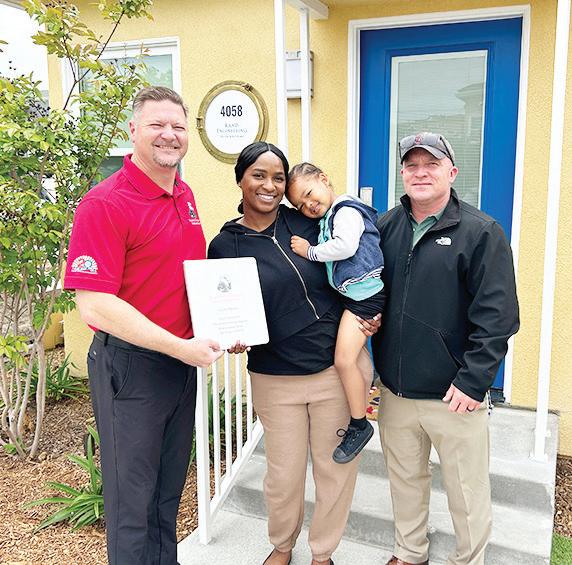



By: Robert ‘Bob’ Cuyler, PhD Psychologist and Trauma Expert
In this series, we’ve reported on the wide variety of available treatments for PTSD (as well as their pros and cons) and encouraged choice and patient-centered approaches. The ‘big picture’ has consistently been that PTSD can impair personal and family life, but that treatment is worth it. PTSD has a wide range of symptoms, including re-experiencing traumatic memories, avoidance of ordinary activities and events, impact on mood/irritability/anger, and a stressed-out mind and body ready to react to perceived threats. Successful treatment can improve all of these. But this month, we’ll focus on yet another reason to take action –the impact of PTSD on overall health.
The relationship of PTSD to health is complicated, and we haven’t determined a simple cause-and-effect. Indirect influences are probably involved, including behaviors such as diet, smoking, alcohol/substance use, and sedentary lifestyle. It is clear, however, that psychological factors interact and that trauma does create neurochemical changes in the brain that affect multiple body systems. One way to think of this is that each reaction to a traumatic reminder triggers a stress response, and there is significant ‘wear and tear’ on the body related to the repeated reactions to trauma reminders.
Evidence across multiple populations—veterans, civilians, older adults, first responders, men, and women—shows an impact on heart, gastrointestinal, and musculoskeletal health. Specific chronic conditions linked to PTSD include hypertension, gastritis, arthritis, chronic pain, and elevated cholesterol. With the clear relationship of PTSD and panic symptoms, we see the physical manifestations of anxiety, including a racing heart, dizziness, nausea, dysregulated breathing, and excess sweating. At the individual level, our unique genetics and other life factors may create different risks for different individuals. For one, it may be the risk of a heart attack or stroke; for another, it may be the impact of chronic pain and fatigue.


So, where do we go from here? Addressing traumatic stress at the psychological level is important, and in prior columns, we’ve described the variety of approaches, including recommended medications. At the bodily level, a starting place is to establish a relationship with a primary care physician who knows about one’s history and trauma exposure. An individual health plan led by your doctor can target health concerns and risk factors in general, as well as those connected to PTSD.

news.va.gov/124302/community-care-who-eligible-how-can-access-it
Looking critically at your lifestyle is also key. Stopping smoking, reducing alcohol consumption, and adopting a healthier diet to address that waistline and cholesterol level – all of these are good choices. Regular exercise, as simple as walking, has wide-ranging physical and mental health benefits. If a brisk daily walk were a pharmaceutical, it would be a blockbuster. In addition, mind/body practices like yoga, mindfulness meditation, and some martial arts (especially tai chi and aikido) can aid stress reduction and increase a sense of control and self-management.
We hope these considerations will help you develop a ‘whole person’ plan.

Dr. Cuyler is chief clinical officer of Freespira, an FDA-cleared non-medication treatment that helps people with panic and PTSD manage their symptoms by learning how to regulate their breathing. www.freespira.com

www.freespira.com/veterans


By Clinician Arturo Garcia
The Steven A. Cohen Military Family Clinic at VVSD www.cohenveteransnetwork.org


This summer, you may be experiencing a life change. This could include a new duty station or assignment, kids heading back to school, or even transitioning out of the military. For me, it has been the emotional shift of seeing my child start school for the first time. Like many parents, I have felt nervous, a little sad, and deeply aware of how fast time moves.

While some changes are manageable, others hit harder, even if we don’t recognize it right away. Maybe you’ve started noticing something feels off, or you’re not quite yourself lately. Or maybe it’s someone else who sees it first; a loved one, fellow service member, or supervisor might have pointed out that you don’t seem like your usual self. These moments matter. You matter. And they are worth listening to.

If you’re starting to wonder whether something is off, here are five signs it could be time to connect with a mental health professional:
You are feeling emotionally unregulated. You may be noticing that your emotions feel harder to control than usual. You might be quicker to anger, feeling constantly stressed, or finding yourself sad and tearful without fully understanding why. These emotions can hit especially hard following a major life change, like a move, separation from the military, or a shift in family dynamics. If your emotional responses feel more intense or harder to manage than what seems typical for you, it could be a sign your system is overwhelmed and in need of support.
Everyday tasks are starting to feel overwhelming. Responsibilities that you normally handled with ease, like going to work, managing a schedule, caring for your family, or keeping up with errands, may now feel exhausting or unmanageable. You might find yourself procrastinating more, missing deadlines, or feeling paralyzed by decisions that used to be simple. This kind of mental fatigue can be a signal that your mind and body are reacting to ongoing stress in ways you didn’t expect.
You’re pulling away from people or losing interest in things you used to enjoy.
Maybe you're not responding to text messages, canceling plans, or just don’t feel like being around people. Even the activities that used to bring you joy, like working out, hobbies, or spending time with friends and family might now feel like a chore or completely unappealing. Social withdrawal and loss of interest are common signs of emotional strain and can be early indicators of conditions like adjustment disorder or depression.
There are noticeable changes in your routine. Your sleep might be all over the place. Either you can’t fall asleep, or you’re sleeping much more than usual. Perhaps, your eating habits may have shifted too,
whether you're eating less due to stress or eating more for comfort. You may also find that basic tasks like showering, cooking, or tidying up feel unusually difficult. These disruptions in your daily functioning can be your body’s way of telling you something isn’t right.
You feel stuck, overwhelmed, or alone. At times, you might feel like you’re just spinning your wheels, doing a lot, but not getting things done. You may be mentally exhausted, emotionally drained, or feel like you’re carrying more than you can hold. You might even find yourself thinking, “I don’t know what’s wrong.”
These are powerful signs that your internal resources are stretched thin, and that now could be the right time to reach out for professional support.
Seeking mental health support is crucial for addressing challenges like stress, anxiety, depression, and relationship difficulties. The Steven A. Cohen Military Family Clinics at VVSD, as part of Cohen Veterans Network, emphasizes the importance of accessible,
high-quality care for veterans, service members, and their families. By offering evidence-based treatments and removing barriers like cost, the clinics ensure that individuals can receive the help they need to improve their well-being and navigate life's transitions effectively. Learn more by visiting cohenveteransnetwork.org
With 20 years of experience serving in the United States Air Force, Clinician Arturo Garcia, ASW, Master Sgt USAF (Ret.), is a seasoned logistic expert and a quality assurance team lead, who managed administrative processes and providing support to service members. He developed strong analytical, communication, and leadership skills that enables him to excel in challenging and dynamic environments. He retired at the rank of Master Sergeant (MSgt). His career field was 2T2 – Air Transportation. Arturo earned a Transportation Management Associate of Applied Science (AAS) and Bachelor of Arts in Sociology. Today he is a Clinician at the Steven A. Cohen Military Family Clinic at VVSD, San Diego, supporting the military community with help around trauma, anxiety, depression, and other mental health challenges.

By Jay Wylie confidentialrecovery.com
As a 22-year Naval Veteran, and some of it spent in command of a warship, I understand what it means to put your own needs below the needs of your company, your mission, and your country.

The “warrior ethos” that is ingrained into all of us during basic training and then throughout our years of service rewards sacrifice.
But what if this warrior ethos causes us to make decisions that unknowingly endanger ourselves, our families, and the society around us? This is the case when it comes to the sinister and baffling disease of addiction.
Addiction, once considered a moral failing, is now universally recognized as a treatable medical condition, just like diabetes or hypertension.
Addiction is progressive and only gets worse when untreated. The shame and stigma associated with struggling with a substance abuse problem is based on outdated beliefs about willpower. Unfortunately, the structure of the military and its emphasis on discipline heightens the stigma for a vulnerable population of

young people who are coping with extreme stress and highly traumatic events.
It’s a recipe for addiction, and it’s simple math that between 10 and 20% of our nation’s servicemembers will struggle with substance use at some point. When you factor in the high instances of post-traumatic stress disorder (PTSD) and many social and cultural challenges that veterans face when transitioning out of the military into civilian life, it makes sense that this population experiences addiction at a much higher rate than their civilian counterparts.
The outpatient drug rehab program that I work for, Confidential Recovery, just celebrated 10 years of helping men and women get sober and stay that way in San Diego, and many of those people are, like myself, veterans.
At our 10 year celebration, (https://bit.ly/4l8mM5Q) we were recognized by many local leaders and given several proclamations by entities like the San Diego County Board of Supervisors in recognition of the work we have done.
We are able to reach and help veterans at our outpatient drug rehabilitation center by “meeting them where they are,” and providing individual counseling, group counseling, and other evidence-based processes to help them abstain from drug use and thrive in recovery.

Just this year we got clearance to accept TRICARE insurance and treat active-duty military members and their families. It was a logical step given our program’s excellent track record with veterans.
Active-duty service members can contact Confidential Recovery directly, (https://bit.ly/3HJnOa7) and their privacy is protected by HIPAA laws, so they do not have to disclose their drug treatment to the military (note: there are potential exceptions to this, contact Confidential Recovery, or visit the Confidential Recovery website www.confidentialrecovery.com for the ful disclosure).
Outpatient drug & alcohol rehabilitation is a manageable commitment that fits in with most people's schedule. It's 3 days per week, and 3 hours per session, for a total of 9 hours per week.
Confidential Recovery utilizes a "social model," which features group therapy, but includes individual counseling as well. Confidential Recovery offers day & night meetings, including weekends, and some sessions can be attended remotely (via Telehealth).
To get more information or to get started with treatment, contact Confidential Recovery directly at (619) 452–1200 for a private and complimentary assessment of your situation. It may expedite the process to have your TRICARE details ready.

For more information you can visit the Confidential Recovery website at www.confidentialrecovery.com
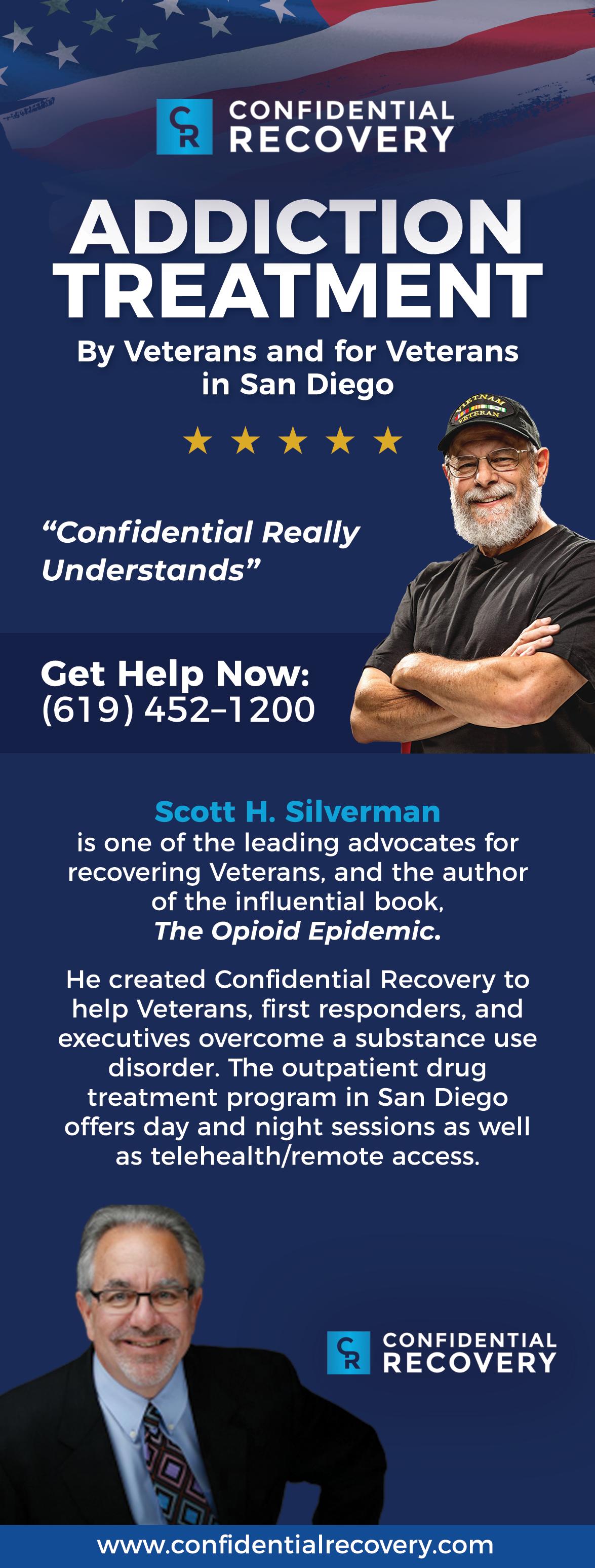
San Diego Veterans Magazine spoke with U.S. Air Force Veteran Ed McKenzie, father of two, and a Franciscan priest, to share his story and free retreats he leads for fellow Veterans at the historic Mission San Luis Rey near San Diego.

SDVM: How did your service shape you?
Fr. Ed: 1969 forever changed history and my life. In Vietnam, as a member of the 38th Air Rescue and Recovery Squadron, PEDRO, their motto “That Others May Live” became my salvation, at some level, the unspoken Gospel that we lived by every single day.
56 years later, as a Catholic Priest, I continue to live by those words! They summarize the entire Gospel of Jesus Christ. It’s all so very simple! It was the very motto that Jesus Christ lived, suffered and died for.
What we did was no less traumatic and bloody than those who did the actual fighting! Being medivac, combat air rescue, I never had to sight another human being down the barrel of a rifle. Many of my buddies did! I came out of it with no physical wounds. Many around me did not. They are struggling today with scars they picked up fifty-six years ago!
These people are why I do what I do. Advocating and providing retreats to enhance their quality of life.
SDVM: How did your healing begin?
Fr. Ed: The wounds I carry aren’t easily seen. To have witnessed the cruelty man is capable of shattered me. The trauma I experienced resulted in PTSD and makes life difficult on a daily basis!
Today, I’m getting help through a therapist. Humpty Dumpty shattered and it takes time to pick up those pieces and put them back together again. Some would say it’s impossible, but still we try!
I thank God I’m one of the lucky ones. It took fifty years to seek the help I needed. My goal is to help the less lucky. Those who need help but cannot or will not get it. They will not expose that wound. They “rubbed some dirt into it” and got on with life! And that’s unhealthy!
SDVM: What happens at your one-day retreat?
Fr. Ed: It’s composed of group discussions where all can share their feelings, “witnessing” a journey to wholeness, and methods of therapeutic guided meditation to aid in recovery. While it’s not a “religious” experience, there is a “spiritual” component.
One’s denomination or religious affiliation is of no concern. All are welcome! Expect some prayer and conversations around two soldier/saints, St. Francis of Assisi and St. Ignatius of Loyola. Both were involved in fierce combat that resulted in PTSD and moral injury. But, they figured out how to deal with their illnesses on their own. They created therapies that are useful still today. They became “saints” and that demonstrates it is possible to come out of the hole that conflict has many times left us in. One can participate as much or as little as they are comfortable with. No pressure whatsoever!



I have come to realize this sort of healing is a process and it takes time. It can be a life of taking “baby steps” toward health and wholeness.
I have witnessed life-changing results and heard from many who have said how wonderful this retreat was for them!
Adult family members are also invited. They are just as affected by the PTSD of loved ones.
Near the end of his life, St. Francis gathered his followers saying, “Until now we have done nothing…let’s get busy!” What he called “nothing” changed the world! Today, as a Franciscan, the “Coming Home” retreat is my response to that directive! My hope is “That Others May Live” because of it!
SDVM: How has living at The Hacienda shaped your mission?
Fr. Ed: I’ve met other veterans of similar age! It’s my hope to bring them together to share our stories. I discovered a resident who was in my unit. I didn’t know him then, but we had the same friends and experiences. He was also driven by the motto “That Others May Live”.
Hacienda has given me the opportunity to speak to the entire community about the problem of Veteran suicide and how my retreat is addressing it. Allowing me to do this has given me a new missionin my later years that adds to my search for “meaning”. I’m grateful for this opportunity. All of this has aided me in securingmy own mental health.

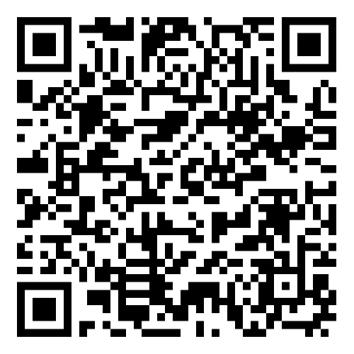


For more information about “Coming Home Retreats” or register for the next on Saturday, August 9th, visit sanluisrey.org or call (760) 757.3659 www.sanluisrey.org














- Patriots to Education: A New Mission
- Your Month of Independence
- The Future of Military Transition (Ai)

- Unleash the Power of Women Veterans
- What to Remember in your Transition
- Job Search and Career Transition 2025
- (Reset) Game-Changing Success
- Independent Contractors
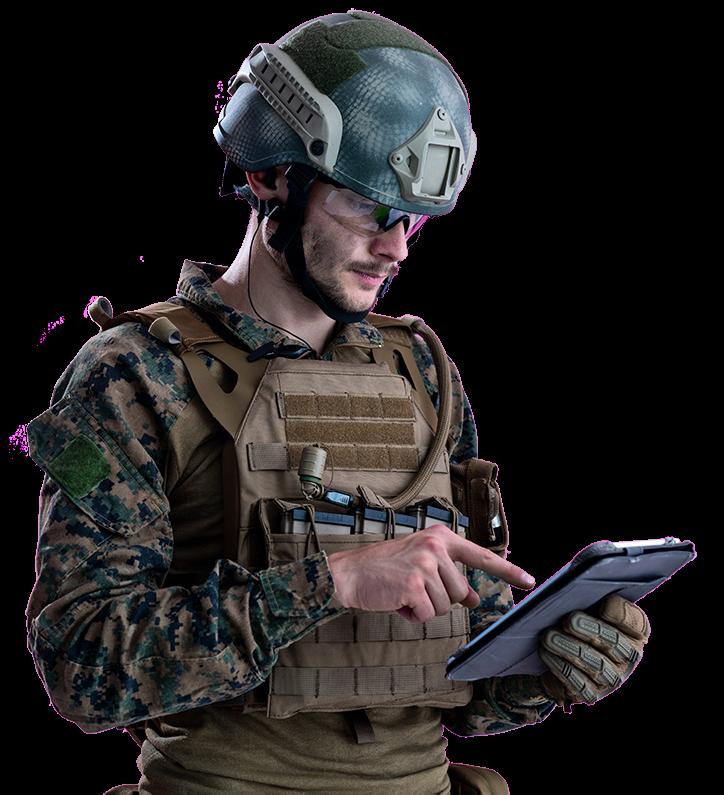

For editorial & monthly columns regarding transition, career advice, tips, workshops, transition to education, entrepreneurship, straight-forward legal tips for military and veteran business owners and more, visit Veterans In Transition. sandiegoveteransmagazine.com/category/veterans-in-transition



Turn your military training into a mission for justice with a Criminal Justice degree from Los Angeles Pacific University. Our 100% online program is built for military members, spouses, veterans, and dependents, offering flexibility and Christ-centered support from coaches who understand your journey. Whether you’re on base, deployed, or at home, LAPU moves with you. Study anytime, anywhere!*
• Maximize Your Benefits – GI Bill®, Tuition Assistance & Spousal Aid
• Earn Credit for Military Experience – CLEP, DSST, JST & More
• Fully Accredited – Associate, Bachelor’s and Master’s Degrees Your Mission. Your Education. Your Pace. Take the Next Step at

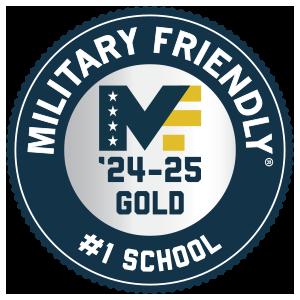

*LAPU is currently unable to offer distance programs in select states. Visit website for details.


By Dr. George Ann Rice Patriots to Education
Across the nation, school districts are grappling with a critical teacher shortage that threatens student achievement and long-term opportunity. Classrooms without qualified educators lead to larger class sizes, diminished one-on-one instruction, and the loss of programs that spark curiosity and creativity. This issue is particularly challenging for students in underserved communities, where access to consistent, high-quality instruction is essential for closing opportunity gaps.
But this is more than just an education issue—it’s a national imperative.
The ripple effects of a weakened public education system extend to national security, economic vitality, and civic engagement. A lack of STEM educators limits innovation. Underserved schools widen inequality. Unfilled teaching positions leave future generations less prepared to meet the challenges of our time and to take technical jobs that are being created now. Even military readiness is affected: the U.S. Department of Defense reports that over 70 percent of young Americans are ineligible for military service, often due to educational shortcomings. And military families—crucial to the stability of defense communities—consider the quality of local schools when deciding where to live and whether to stay.
One Big Step Toward a Solution: Tap into a powerful, often-overlooked resource: the military-connected community.
Patriots to Education (PTE) is a nonprofit initiative that unites two national priorities—supporting veterans and strengthening public education. PTE actively recruits and supports Veterans, Reservists, National Guard members, military spouses, and transitioning service members (within one year of separation) to pursue meaningful careers in public education teaching, related-service providers, support staff, technical and operations. These individuals bring unmatched leadership, discipline, and mission-focused mindsets— qualities that schools need now more than ever. Also, they provide diverse and male role model candidates needed by students from all ethnicities and many from father-less homes. Students must be taught to understand and appreciate the uniqueness of our country.
Each year, approximately 200,000 men and women transition out of the military. According to the California Center for Military Integration, nearly 70 percent of them are unsure of their next steps. PTE offers them a clear pathway forward: a career that continues their legacy of service while making a lasting impact on the next generation.
Through strategic outreach—Transition Assistance Program (TAP) Capstones, installation education offices, installation-wide newsletters, Key Spouse programs, and onboarding events for incoming families—PTE connects early and meaningfully with those in transition. It also collaborates with National Guard and Reserve units, veteran organizations, and state employment programs like Work for Warriors and CareerSource to ensure those best positioned to serve in schools and central services are reached.
There are over 5 million veterans under the age of 50 living in the U.S. today. Many of them—and their spouses—are eager for purposeful careers that align with their values. PTE empowers them with assistance in identifying the training, resources, and support needed to thrive in public education, whether in the classroom or in school support roles.
Our mission is simple but powerful: honor the continued service of our nation’s heroes while strengthening the schools that shape America’s future. Success isn’t just measured in placements—it’s measured in student outcomes, community impact, and the knowledge that those who once defended our nation are now helping to educate and inspire it. Together, we’re building brighter futures—one classroom at a time.
In the months to come, we will share the work in several states and let you hear from those who have already accepted this New Mission with A Crucial Impact







By Kevin Dunn linkedin.com/in/kevindunn
In the United States we have just finished celebrating the 4th of July. It’s a special time to Americans. Not only are there picnics and parades, there is an understanding that over 200 years ago people got fed up with the way things were and pledged their “lives, fortunes, and sacred honor” to making the changes they saw necessary for long-term success as a nation.
July is also halfway through the calendar year, six months away from the hopeful exuberance of New Year’s resolutions. This makes it a perfect opportunity to make July a month to declare your personal independence from the things that are standing in the way of your resolutions and goals. Revisit those grand dreams and declare your independence from the tyranny holding you back – pledging with the same revolutionary fervor as the patriots did to make the changes necessary for your success.
Declare your independence from failure.
How are you doing on the goals you made at the first of the year? Have you fallen so far behind that you have shoved them back into a corner, pointedly ignoring them because you feel that you have failed?
This is the tyranny of failure. It stalks along beside you, assuring you that each and every time you try something new it will not work out and you will not be successful. Often it has helpers – your friends, co-workers, possibly even those closest to you. Regardless, the largest ally of failure is the voice inside of you.
Before you listen to all these voices, ask yourself these three questions:
• Have you given this goal your best effort?
• If you have – what are the reasons you could not be successful? Is it a lack of resources, knowledge or skill?
• How can you learn from where you are and make a plan to acquire what is missing – the resources, knowledge or skills – to allow you to be successful?
The great Roman general Marcus Aurelius asked the question a different way: “Does what’s happened keep you from acting with justice, generosity, self-control, sanity, prudence, honesty, humility, straightforwardness?”
In other words, does what you perceive as failure change your basic nature as a human being? If not, don’t waste time being held back by the failure. Instead use it as an opportunity to learn and grow. Take that learning and growth into the future and continue on to achieve your goals.

Declare your independence from fear.
Television personality Mike Rowe tells a story when he stood before the camera to begin his first night as a host on the shopping channel QVC. He had a product he knew nothing about, he had no experience in live television, and he knew that QVC was not interested in on-air personalities who could not sell products.
In his story, Mike points out a key in declaring your independence from the tyranny of fear: Don’t hide your fear. Acknowledge that you are scared to yourself and to those around you. In Mike’s case, he started out his segment letting the entire television audience know that it was his first time, he didn’t know anything about what the product did, and then he asked them to get involved and help him out.
The audience responded by filling the phone lines to talk about their experience with the products, encouraged by Mike’s willingness to be truthful and authentic with them. Most importantly, they were willing to purchase the products being pitched.
What Mike Rowe did was eliminate the best weapon of fear, which is the uncertainty that comes with doing something that you have not done before. By openly acknowledging the fear he made it clear that he was committed to success and was able to tap into those who were waiting for an opportunity to make that success possible.
Declare your independence from going it alone. The story that Mike Rowe tells also shows the futility of trying to go it alone. Many people set goals – whether they are related to education, fitness or career – then attempt to achieve those goals in the absence of any type of support system.
The self-made man is a myth. Throughout history, leaders who have been successful have had carefully developed support systems around them.

Whether they are formal advisors, technical assistants, or just sounding boards who can help in the development of ideas, a support system is invaluable in helping you reach a goal.
Make yourself accountable to those who care about you. It does not have to be a formal accountability framework; something as simple as online social media can be very powerful. When I first started a fitness program, I posted each day’s run to my Facebook account. This was not so much that I wanted to be sure that my friend saw me run, rather, it was my motivation when I did not want to go run.
Make this July your personal “Independence Month” – a month to recommit to the goals that you want to achieve this year.
Adjust where necessary, learn from the attempts of the first half of the year, banish your fear, and re-engage with your support system.
You have the second half of the year to make your goals a reality, and the experiences of the first half of the year to get you there.



By Maurice D. Wilson, MCPO (Ret), President/ED - National Veterans Transition Services, Inc. aka REBOOT
For decades, we’ve accepted the military-to-civilian transition process as a disjointed journey, riddled with uncertainty. We’ve watched veterans leave the service filled with pride—but also anxiety, confusion, and silence. Despite hundreds of programs and billions in funding, the outcomes haven’t changed. Two-thirds of service members report a difficult or failed transition.
At NVTSI, we’ve spent years listening to these stories— stories of jobs that didn’t work out, benefits missed, identities lost, and missions never redefined. But this isn’t just a personal problem. It’s a national crisis rooted in six structural breakdowns that create a system more reactive than ready.
Now, for the first time in years, there’s a reason to be hopeful—and it's not just policy reform. It’s not another checklist. It’s not a patch. It’s a breakthrough: AI-powered ChatGPT Agents. And they’re already changing everything.
When a service member prepares for combat, the military invests months in training. But when they prepare to return home? They’re often handed a single week of “transition prep”—and that’s if they attend at all. According to a GAO Report, Over 70% of service members don’t complete the Transition Assistance Program (TAP) within their final year, despite the requirement to begin planning 365 days prior to separation.
This isn’t just a missed opportunity. It’s the first domino. From there, the six structural gaps begin to unfold:
1. No personal transition planning
2. Loss of identity, mission, and purpose
3. No warm handoff to support systems
4. No aligned upskilling or reskilling
5. No intelligent job matching or resume support
6. No comprehensive, wraparound reintegration framework

The result? Veterans become lost in a maze of disconnected services, job boards, benefits portals, and vague advice. It’s no wonder 66% of them say the process failed them.
But what if, instead of being alone with a checklist, every service member had a digital assistant—an AIpowered “transition officer”—to help manage every step?
Imagine an AI assistant that:
• Logs into your MYTT365.online dashboard
• Scans your progress, flags overdue tasks, and gives you your next three priorities
• Syncs your tasks with your calendar and emails reminders
• Builds a civilian resume from your military experience
• Matches you to real jobs that fit your skills
• Suggests certifications and training based on your future goals
• Sends progress reports to your mentor, counselor, or coach
This is not science fiction. This is ChatGPT Agent, launched in 2025 by OpenAI—and now being fully integrated into the MYTT365.online platform. It’s like having a 24/7 XO dedicated to your post-military mission. And when paired with the proven structure of the REBOOT Workshop, it creates something we’ve never had before: a smart, personalized, end-to-end transition system
With this technology, we can finally close the six gaps that undermine transition success:
• Preparation & Planning: Your AI Agent tracks your tasks and deadlines from Day 1. No more last-minute panic.
• Identity & Purpose: REBOOT + AI prompts help you rediscover who you are beyond the uniform—and what comes next.
• Warm Handoffs: Your Agent ensures follow-ups with OnwardOps, VA, and VSOs actually happen.
• Reskilling & Upskilling: AI helps you find futurefocused career paths and shows you what certifications to pursue.
• Job Matching & Resumes: No more translating MOS codes. The Agent builds your resume and applies to jobs for you.
• Community Reintegration: It connects the dots— healthcare, housing, benefits, and mentorship—in one interface.
At NVTSI, we’re not just teaching this—we’re scaling it. Our new webinar,“Automate Your Transition: ChatGPT + MYTT365”, is already helping transitioning service members across the country build their own transition agents. In just one hour, they leave with a working system that thinks, tracks, and acts on their behalf. And the results? Transformative.
Veterans are reporting greater clarity, confidence, and momentum. Tasks that once felt overwhelming are now automated. The burden is lifted. The mission is back on. We believe this technology represents the future of transition support—and NVTSI is leading the way, right here in San Diego.

If you’re preparing to leave the military—or supporting someone who is—now is the time to integrate AI into your transition plan. You can register for the next free session at: https://bit.ly/mytt365-AI-Agent-Webinar for 02 Sept, at 10AM
We’ll show you how to activate your Agent, sync it with MYTT365, and turn the chaos of transition into a wellrun operation. Because you’ve already answered the call to serve. Now let’s make sure you’re supported, empowered, and equipped for the next chapter—with technology as disciplined and mission-focused as you are.

Maurice D. Wilson, MCPO (Ret), President/ED - National Veterans Transition Services, Inc. aka REBOOT
To learn more visit www.nvtsi.org or to sign up for the next REBOOT Seminar visit www.nvtsi.org/events/categories/seminar
By Lori Noonan www.NonProfitPros.org
Women are the fastest-growing population within the U.S. military veteran community. They are leaders, innovators and public servants - yet when the uniform comes off, many face a challenging path into the civilian workforce. Despite their proven capabilities, women veterans experience higher unemployment and underemployment rates than both male veterans and nonveteran women. According to the U.S. Department of Labor, unemployment for women veterans stands at 5.9% - nearly twice that of their male counterparts. This disparity is more than a data point; it reflects the structural and cultural barriers women veterans encounter as they navigate career transitions.
Military women often leave service with deep expertise, leadership experience and unmatched resilience. But their skills are not always understood, and are often undervalued, by civilian employers. Many women veterans report difficulty translating their military experience into civilian terms, being overlooked for leadership roles or facing gender-based bias in hiring processes. Others face challenges with underemployment, in which they accept roles that don’t reflect their capabilities or aspirations.
Mental health plays a key role too. Women veterans are more likely to experience PTSD, depression and anxiety, yet transition-assistance programs rarely offer genderspecific or trauma-specific employment support. As a result, many women struggle in silence, navigating their career paths without tailored guidance or community support.
Despite these challenges, success stories abound. Across industries - from finance and tech to healthcare and education - women veterans are rising as powerful contributors and changemakers. Their success isn’t accidental; it’s often fueled by intentional mentorship, inclusive hiring practices and veteransupportive workplaces.
Community engagement is critical. Local events that can bring women veterans together —through mentorship, networking or recognition ceremonies create space for connection, visibility and mental-wellness support. These gatherings strengthen career networks and oster a sense of belonging. When women veterans feel seen, heard and supported, their ability to lead and thrive multiplies.

Women veterans deserve intentional, community support, which requires strategic action. Those actions might include:
• Tailored, Workforce-Transition Support:
Veteran-serving programs should strive to meet the specific needs of women veterans by offering oneon-one coaching, providing childcare solutions and fostering mentorship from other women who’ve successfully transitioned from active duty to the civilian workforce.
• Integrated Mental Health & Career Services:
Those committed to supporting veterans should seek to provide holistic support that promotes emotional resilience and career readiness. It is essential that said services include resources that focus on posttraumatic growth.
• Commit to Supporting Veterans:
Organizations must intentionally invest in military cultural competence, actively address gender bias in hiring processes and purposefully create environments that demonstrate support for veteran employees.
• Showcase Successes to Boost Visibility:
Sharing the stories of successful women veterans in leadership and technical roles inspires others and shows employers the tangible value of veteran talent.
• Better Data for Better Decisions:
Providing and using more detailed labor market data – particularly segmented by gender and race - will help shape better and more inclusive policies and employment strategies.
Women veterans are ready to lead. Let’s make sure they have the opportunities and support they deserve. When we invest in women veterans, we strengthen our workforce, our communities and our country.
Lori Noonan is a U.S. Navy veteran, military spouse, and seasoned nonprofit executive with over two decades of experience driving social impact.
As the founder of Capacity Builders, a consulting firm dedicated to elevating nonprofit excellence, and the Chief Growth Officer at Veterans Bridge Home, Lori leverages her expertise in fundraising, strategic planning, and governance to empower organizations serving veterans and their families. A certified Standards for Excellence consultant and BoardSource-trained governance expert, she is committed to bridging gaps in veteran employment and advocating for the unique strengths of women veterans in the workforce.

By Eve Nasby eve@infused.work

Memory is a funny thing. We tend to remember things we’d like to forget, and we forget those things we thought we’d always remember.
As you transition out, it’s important to remember the accomplishments, experiences and friendships that will help you in this next chapter. When you’re focused on the “what-if’s” of transition, it moves your focus to the future instead of the past. By remembering all you have done in the past, you can be prepared for a new future that is satisfying and rewarding.

Use this acronym to “REMEMBER” your experiences in a way that sets you up for success in transition.
Remember who you are and why you decided to serve.
Your training, your ability to complete a task, to be on time and be a part of a team are all things that will add value to any organization. Remember why you decided to serve. Maybe it was to be a part of something better than yourself, or perhaps to escape from a fear of what you thought you’d be stuck with. Maybe you wanted a way to get an education or see the world.
Whatever the case, you were decisive and did it. You experienced change and can embrace challenges. You became part of something bigger than yourself. Remember that.

FEAR is False Evidence Appearing Real. When you have the natural fears of transition, where is that fear rooted? Not making enough money? Not speaking the right ‘civilian’ language? Not being groomed enough for civilian employment?
Fear not. Write out a list of the raw fears that you are facing in transition. Find a mentor who is experienced in helping those in transition and discuss these. You will be surprised how much ‘False Evidence” you have in your mind that appears real.
Start planning 12-18 months out. If you fail to plan you plan to fail. Do your research. Do some soul searching. Where do you want to be location-wise? How important is the salary number? Do you have a certain work culture in mind? Write these down clearly and specifically. Then you have a guide to help narrow your choices to those that fit what you really want.
Engage your network.
After you write out your plan, tell others about it. Want to work for Subaru in Lafayette, Indiana? Jump on LinkedIn and find the head of HR. Ask for an informational interview. See who else knows people who work at Subaru and engage them for ideas of what it’s like to work there and the best way to land a job.
Move.
The paralysis of analysis can be…paralyzing. With so many companies, jobs and choices make it easy to freeze up with indecision. But you have a plan! So, start moving towards what that says. If a choice doesn’t align with your plan, forget it! Keep moving while making decisions that align with what you said you want. That will get you to the job/career you want and love.
Be accountable.
Transition is not successful if you go it alone. Be accountable to your mentor. If you are struggling with interviews or networking, be honest with yourself and with your mentors and friends.
People love to help but it is often difficult to ask for help. Just ASK. Do what you say you’ll do. Do what they suggest you do.
Elevate your mind.
Look up. Literally. You’ll probably get rejected at some point in the process. Everyone does. Maybe you don’t hear back from a company after a great interview. Don’t assume rejection, but be okay if it is. Keep your head up. Elevate your mind. Follow up if you don’t hear back about a job you want. Remember, you’ve made it through boot camp and far worse. How’d you get through that? Your network, resources, friends, books, and faith will keep you elevated if you allow them to! It’s not trite to say that when one door closes, another one opens. Elevate your mind to really believe that.
Reframe your thoughts.
It’s common to think you don’t have the skills and experience necessary for civilian jobs. That’s not the case. If you think it is, you haven’t reframed your experiences and accomplishments in a relatable way to civilian employers.
Your mentor and network can help you reword your skills and accomplishments in the military into a story that’s incredibly valuable to employers.
Reframe how you see yourself. Ok, so the dress code and language is different in the civilian work world. No problem. Start small. Get used to removing “Yes Ma’am” or “Yes Sir” from your daily lingo. Avoid using acronyms that only the military understands. Start practicing interviews with your peers. Get feedback, and keep reframing until you get comfortable.
Remember, you have what it takes! Remember these tips and put them into practice to help navigate your best path in transition.
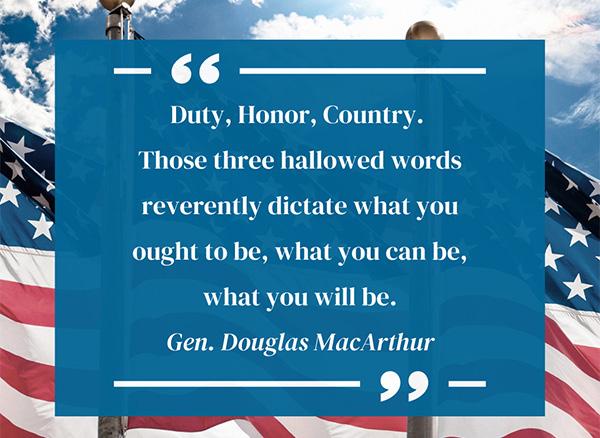

Finding a job in the civilian workplace may seem easy at first. After all, you have learned skills, practiced leadership and demonstrated initiative that will make you successful wherever you go.
The reality, though, is that it can be difficult. In fact, it can be downright depressing demotivating and you may feel totally disillusioned. We can help.
In our Veterans In Transition archives you will find helpful and informative articles about what’s next in transition, veterans in business, career, advice, tips, workshops, transition to education, entrepreneurship, veteran franchises, legal tips & resources for veteran businesses and much more...
For assistance in your journey please visit: SDVMagazine-Veterans-In-Transition sandiegoveteransmagazine.com/category/veterans-in-transition
By Paul Falcone PaulFalconeHR.com


The summer issue is always a good time to take a mid-year reckoning of the state of the job market in general plus any particular challenges being felt by job seekers—new or experienced. Overall, job search is tough right now. Markets don’t like uncertainty, and with tariffs, inflation, DOGE federal government cuts, and military conflict looming over the horizon, CFOs are hanging onto and hoarding cash (just like you and I may be as private citizens). As a result, companies are hiring at nearly the lowest rate in a decade and are looking to cut costs wherever they can.
The job market for transitioning military personnel is and will always be dynamic, with both opportunities and challenges. While veteran unemployment rates can fluctuate, there are consistently "hotter" areas and effective job search strategies to leverage your military experience in the private sector. Here's a breakdown of what's hot and how to approach your job search to get optimal results.
• Hot Industries and Roles for Veterans
Military personnel bring highly valued skills, such as leadership, problem-solving, teamwork, adaptability, and working under pressure. These translate well into several in-demand civilian sectors:
1. Technology and IT: This sector continues to boom, and veterans are highly sought after.
• Cybersecurity • Data Management and Analytics
• Software Development and Architecture
• IT Tech Support
2. Logistics and Supply Chain Management: This is a natural fit for many veterans given their experience in coordinating resources, personnel, and equipment in complex environments. Roles include:
• Operations Manager
• Logistician (Managing supply chains, inventory, transportation, and warehousing).
3. Healthcare: A fast-growing industry with a need for disciplined and team-oriented individuals.
• Nursing and Allied Health (i.e., technicians and specialists)
• Healthcare Administration
4. Project Management: Military experience in planning, delegating, and meeting deadlines makes veterans excellent project managers across various industries like construction, IT, and logistics. PMP (Project Management Professional) certification is highly recommended.
5. Skilled Trades: If you have mechanical, engineering, or technical expertise, trades like welding, HVAC, and electrical work offer stable careers with solid earning potential. Apprenticeship programs can be a great entry point.
6. Government and Defense Contracting: Many veterans find fulfilling careers in these sectors, leveraging their military experience and familiarity with government operations. Roles include:
• Defense Analyst
• Security Consultant
• Federal Agents and Law Enforcement: Police officers, correctional officers, and various agent roles are consistently in demand. (Focus on state and local rather than federal government openings until things settle down.)
• VA Careers: The Department of Veterans Affairs actively recruits veterans for roles like police, medical support assistants, and environmental services. For more ideas on the types of jobs that may interest you, visit the Bureau of Labor Statistics’ “Occupational Outlook Handbook” at https://www.bls.gov/ooh/
• Key Job Search Strategies for Active Military Transitioning to Civilian Life
In tougher job markets, it becomes all the more important that you stand out in terms of your job search strategy. The following tips will help you do just that.
1. Translate Your Military Experience: This is perhaps the most crucial step. Civilian employers often don't understand military jargon, acronyms, or the direct civilian equivalent of your military roles.
• Quantify your accomplishments: Instead of saying "managed a team," say "led a team of 15 personnel responsible for X, resulting in Y improvement/efficiency."
• Use civilian-friendly language:
Rewrite job descriptions and achievements using terms that a civilian hiring manager will recognize and value (e.g., "logistics" instead of "supply NCO").
• Utilize military skills translators:
Resources like the VA's military skills translator can help. (See https://news.va.gov/ (VA Careers) and www.military.com/veteran-employment-project)
• Focus on transferable skills:
Highlight your leadership, teamwork, problem-solving, adaptability, communication, discipline, and ability to work under pressure.
2. Leverage Transition Resources:
• Transition Assistance Program (TAP):
Attend workshops to learn about career exploration, job search strategies, resume writing, and interview skills.
• Veteran-focused organizations:
Organizations like Hiring Our Heroes, Soldier for Life, Marine for Life, Military Officers Association of America, Non-Commissioned Officers Association, United Service Organizations, and VetSec offer valuable support, networking, and job placement services.
• DoD SkillBridge, Hiring Our Heroes, HeadLamp: These programs can help you gain civilian certifications and practical experience before you even leave the military.
Further, connect with other veterans on professional networking platforms. Attend job fairs. Clean up your social media (especially from strong political statements). Go heavy on establishing your LinkedIn presence (since that’s the first place employers look when seriously considering candidates). And make use of the GI Bill to cover tuition costs for degree or technical training.
Yes, it’s asking a lot. . . But by focusing on in-demand fields, actively translating your military skills, and utilizing the wealth of resources available, transitioning military personnel can successfully navigate the civilian job market and find rewarding careers, despite all the craziness in today’s job market.
You can connect with Paul on LinkedIn at www.linkedin.com/in/paulfalcone1
Paul Falcone (www.PaulFalconeHR.com) is a management trainer, executive coach, and bestselling author on hiring, performance management, and leadership development.

www.HarperCollinsLeadership.com
By Barbara Eldridge www.mindmasters.com



“Everything you want is out there waiting for you to ask. Everything you want also wants you. But you have to take action to get it.”
– Jack Canfield
Owning and operating a business isn’t something that one undertakes lightly. It requires a huge leap of faith. It’s both exciting to live your entrepreneurial dream, and at the same time scary because there's no guarantee you'll succeed. But the benefits of being challenged physically, intellectually and emotionally as a business owner are in a word: ENORMOUS!
Success is created by the systematic process of setting and achieving progressively more difficult, interesting and rewarding goals. Goals are the things that you make happen when you're awake. Goals are the things which require you to get up, keep your eyes open on the road ahead and work. Goals are the things which often, if not always, come to life providing you work at them.
Your results then are a reflection of your self-esteem and demonstrate what you believe to be true about yourself and what you are capable of. They showcase the depth of your intellect, creativity and passion.
When striving for success, it isn't about toughness and strength it's about alignment with your profound values, beliefs and thoughts. Setting goals, developing a rock solid-plan, and having a significant challenge in place for your entry into this Quarter can and will help reduce the uncertainty and thus the fear, replacing it with control and confidence. That’s what you really want, isn’t it?
Get ready for a new perspective - Set your goals, write them down, set deadlines for their achievement and get busy working a plan. Let your daily watch word be action, action, ACTION!
If you've gotten this far and can acknowledge that you are capable of being, doing and having so much more, then what are you going to do differently in the THIRD QUARTER?
Remember that your journey is a gift because it provides the wisdom you will need to go out and create positive change in the world. So your commitment is to learn from your past and do better as soon as you know better. Be strong and have courage to change.
“I wish for you a life of wealth, health and
happiness;
a life in which you give yourself a life of patience, the virtue of reason, the value of knowledge, and the influence of faith in your own ability to dream about and achieve worthy rewards.”
- Jim Rohn
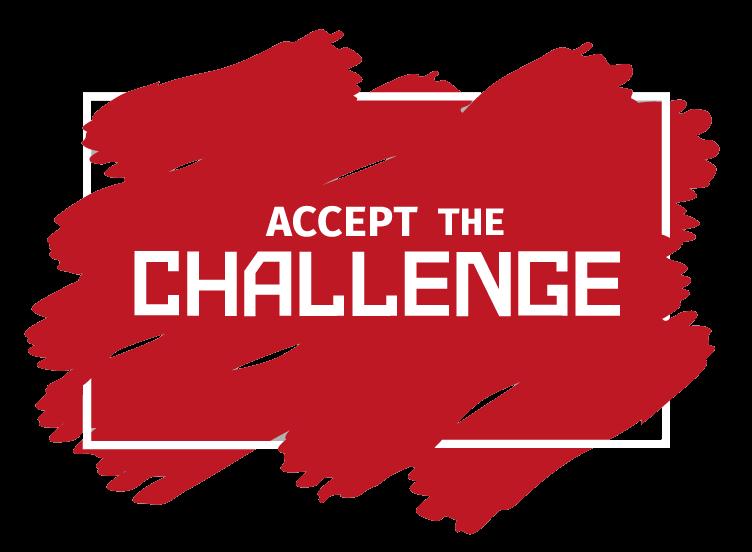




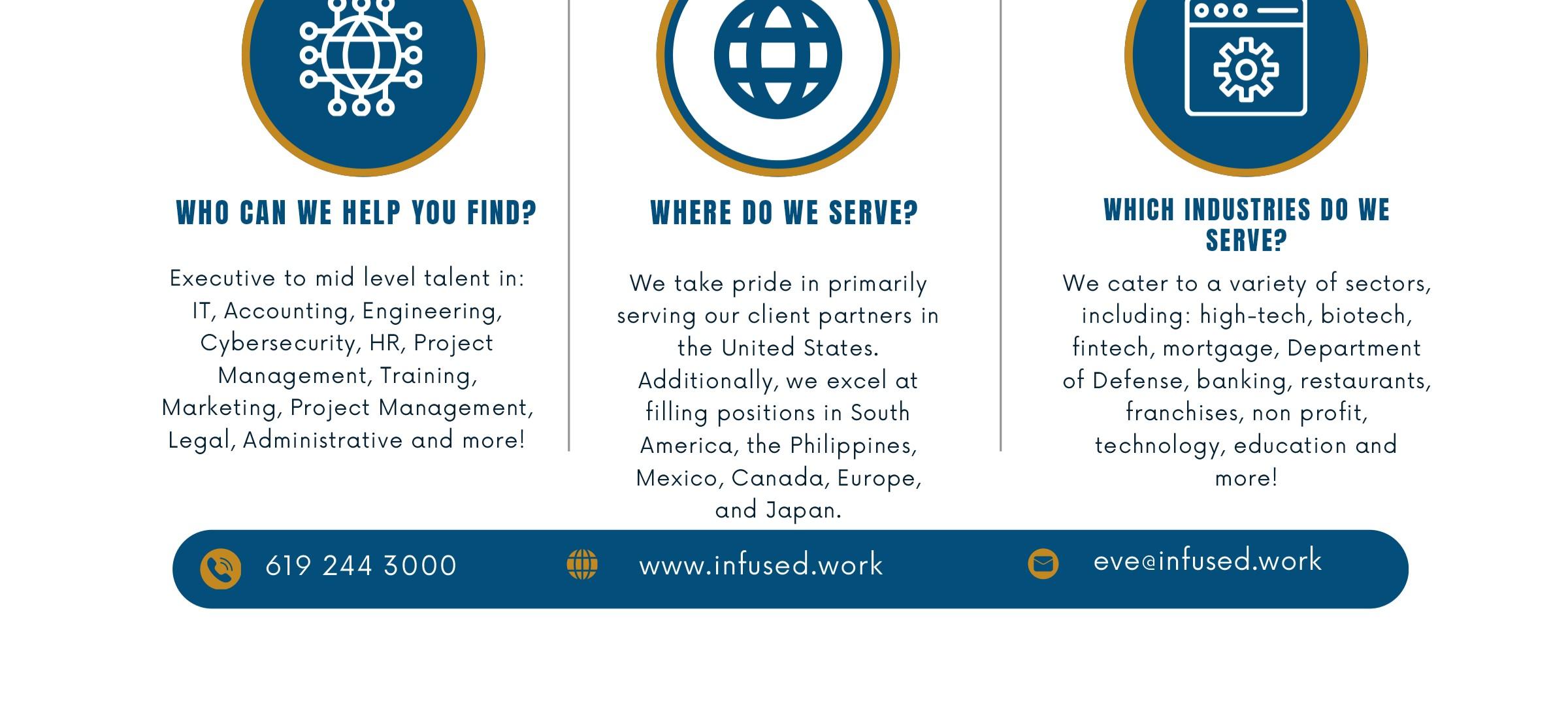
www.infused.work
eve@infused.work

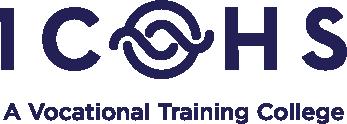









By Scott Hermann, CEO of IdentityIQ®
If you or a family member is a veteran, you may be at a higher risk for identity theft and other scams. Veterans are popular targets because of their valuable benefits, including pensions, healthcare, and other government resources. Awareness and caution are essential to help protect your personal information and finances.
From phishing attacks to fake charities, these scams can cause significant financial loss and emotional distress.

Many scammers pose as representatives of the Department of Veterans Affairs (VA) in targeted phishing scams. They may send emails, text messages, or make phone calls pretending to be from the VA to try to trick you into revealing sensitive information, such as your Social Security number, login credentials, or banking details.
Even if a scammer doesn't directly ask for your personal information, they may send links or attachments loaded with malware that can extract sensitive data from your device. Scammers use official-looking logos and language to appear legitimate. It's crucial to remember that the VA will never ask for personal information through unsolicited emails or phone calls.
Another common scam involves fake charities claiming to support veteran-related causes. These scammers take advantage of veterans, their family members, and people who want to help veterans, collecting donations that never reach those in need. Fake charities often surface around Veterans Day and at other times when the public is more likely to contribute to veteranfocused causes.
• Verify Communications: Always verify the legitimacy of communication you receive regarding your VA benefits. Official government organizations like the
VA will never askfor sensitive personal information via unsolicited emails and phone calls. If you receive possible suspicious communication, contact the VA directly through their official website or phone number to validate.
• Be Cautious of Unsolicited Offers: Be wary of anyone offering unsolicited help or claiming they can provide special services related to your benefits. If something sounds too good to be true, it likely is. Common red flags include unfamiliar email addresses, a forced sense of urgency, misspellings, and suspicious links. Take your time to verify unsolicited offers.
• Check Charity Legitimacy: Thoroughly research any charity before you make a donation. Scammers often set up fake charities with names that sound similar to reputable ones. The Better Business Bureau offers charity reviews to help verify a charity’s legitimacy.
• Monitor Your Identity: Veterans are popular targets of identity theft, making it essential to stay proactive. Using an identity theft monitoring service helps alert you to possible suspicious activity, such as new accounts or unauthorized transactions in your name. This early detection can help prevent significant financial damage and protect your personal information before scammers can cause long-term harm. Regular monitoring offers peace of mind and strengthens your defense against fraud.

Military members, veterans, and their families can begin protecting themselves now with IdentityIQ identity theft protection services. These services include identity and credit monitoring, real-time fraud alerts, device privacy and security, and $1 million in identity theft insurance, underwritten by AIG.
In appreciation of your service, IdentityIQ offers a 25% military discount to military members, veterans, and their families. For more information, visit www.identityiq.com/veterans.

By Hadley Wood www.hlinwood-insurance.com

On the heels of this 4th of July celebration, we mark nearly 250 years of Independence in our great nation. Americans strongly value our freedoms and this is very evident across all sectors of businesses as well. Being a Business Owner myself, I appreciate the freedom to run my operation as I like and I do love my independence from corporate oversight but that doesn’t mean I can ignore the rules and laws of my state.


Many Business Owners may decide to bring on Independent Contractors or 1099 Subcontractors to help them with their everyday business operations. Everything from Marketing, Bookkeeping, IT Services, Virtual Assistants and more can now be a very easy, affordable and accessible way to effectively run the business without the cost of full-time employees on the payroll. Before you consider doing this you will need to make sure that the 1099/Independent Contractor is a true Independent Contractor. Just because you decide that is what you want to classify them as, does not mean that the State will classify them as so. There can be huge consequences to incorrect classification of employees including back taxes, fines, back work comp payments and more. Ignorance is not an excuse and as a Business Owner, compliance with the laws and regulations of your state is mandatory to reduce risk to your business.
• Information Sheet: (DE 31) edd.ca.gov/siteassets/files/pdf_pub_ctr/de231.pdf
• A great tool can be found at (DE 38) edd.ca.gov/siteassets/files/pdf_pub_ctr/de38.pdf
This is an effective checklist to review that can help you determine whether an employee is a W2 employee or a true 1099 Independent Subcontractor.
Once you have determined that you do in fact have 1099 Independent Subcontractors, you will need to have tight, and SIGNED Agreements with each of them that includes specific language to release you of liability should they cause damage, steal intellectual property from you or commit fraud that may affect your business or your clients. You should have a Business Attorney in your pocket to assist you with this as a solid Agreement can not only prevent frivolous claims against you but can show that you have done your due diligence in conducting proper business protocol.
You should also require the 1099 Subcontractor to carry their own insurance (1M limits minimum), issue a Certificate of Insurance to you, name you as Additional Insured (to their policy) with Primary Non-Contributory and Waiver of Subrogation endorsements in your favor. This has become very standard and should not be a big ‘ask’ to them. Part of your due diligence as a Business Owner will be to update and check these annually and keep accurate records of the certificates.
Independent Contractors can help your business flourish and can save you a lot of headache and money. And being an Independent Contractor is a wonderful gift and opportunity that our great country allows us. We all have a personal responsibility to respect and abide by the laws surrounding this and take all necessary actions to ensure compliance so we can keep our freedoms intact.
Wishing everyone a festive, patriotic and safe 4th of July!

